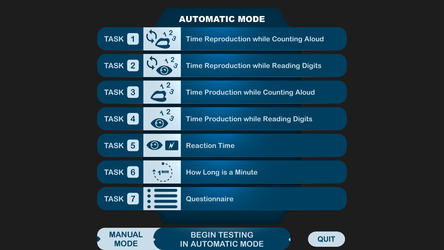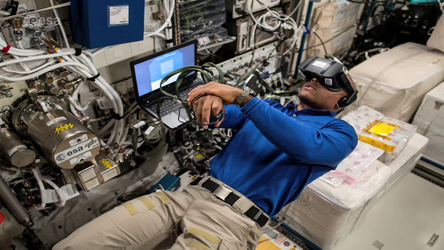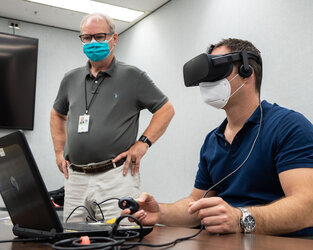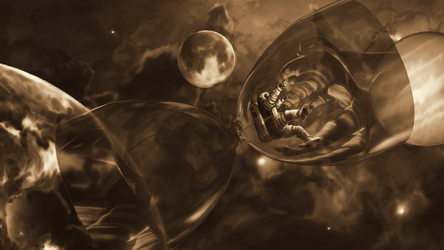
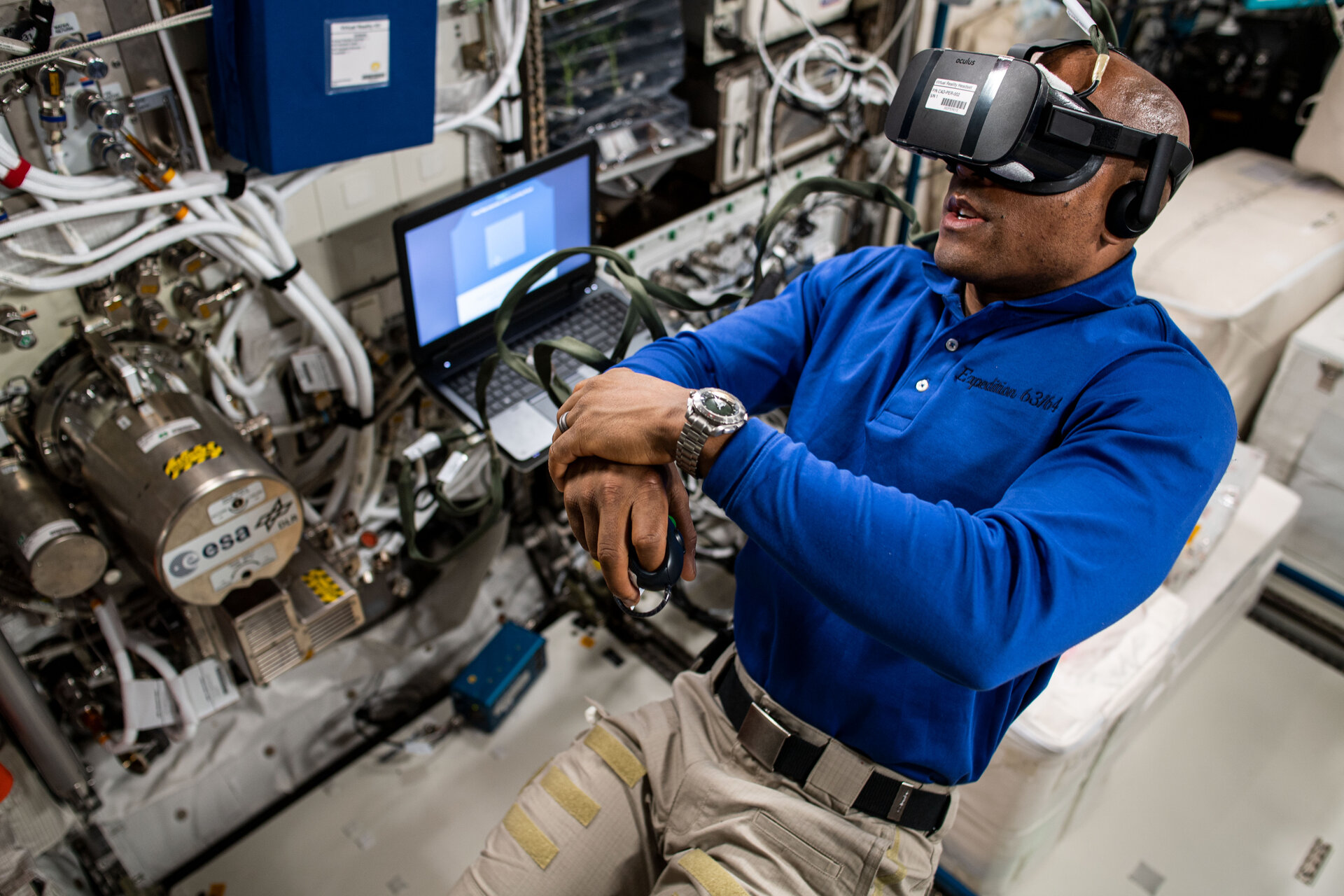
Time keeping
The International Space Station has been orbiting Earth for over two decades, and the first European astronaut to arrive was Umberto Guidoni on 21 April 2001. Time is one of the Space Station’s main assets for running experiments in micro-gravity, as it is the only laboratory that can offer long-term exposure to a weightless world. But how do astronauts themselves perceive time when in space, and could this influence their operational ability when docking spacecraft or controlling robotic arms far from home?
This picture shows NASA astronaut Victor Glover as test subject for ESA’s Time experiment on 26 March 2021. This experiment uses virtual reality to chart whether our perception of time changes when living on the International Space Station.
Since perceptions of time and space are believed to share the same neural processes, and research on depth perception in weightlessness has shown that astronauts often underestimate distance, scientists speculate that, for astronauts, time also flies in space.
The Time experiment on the International Space Station investigates the claim that time subjectively speeds up in microgravity.
Astronauts gauge how long a visual target appears on a laptop screen and their reaction times to these prompts are recorded to measure speed of response and any changes over time.
Scientists are collecting more than just data on the neurological mechanisms at work here. The relativity of time, after all, implies that it is all in your head. As much as we can objectively measure and plot time, how individual humans perceive it is not just neurological but also psychological.
Time flies, and flying at 28 800 km/h time actually slows down according the theory of relativity. This month is a bumper month of celebrations for ESA and international spaceflight as we celebrate 20 years of Europeans on the International Space Station, 60 years since the first human Yuri Gagarin orbited Earth and the launch of ESA astronaut Thomas Pesquet to the International Space Station on a Crew Dragon on 22 April. Thomas will be the first ESA astronaut to fly to space on a different vehicle than the US Space Shuttle or Russian Soyuz.
Thomas set-up the Time experiment during his first mission, Proxima, in 2017. He will now return to the outpost on his Alpha mission and will be the one of the last astronauts to be part of the Time experiment as a test subject. Since Umberto Guidoni arrived on the Space Station all those years ago, 16 ESA astronauts have visited the Station. ESA’s 2009 recruits have cumulatively spent over 7 years in orbit, conducting over 227 experiments in the Europe’s Columbus laboratory module alone. But who is keeping time?
If you would like to follow in the footsteps of these space explorers and float around the Space Station, now is the time as ESA is recruiting new astronauts. Find your way to space here: www.esa.int/yourwaytospace. The application process closes 28 May 2021.
If you prefer your Time experiment in timelapse form, that is available too.

